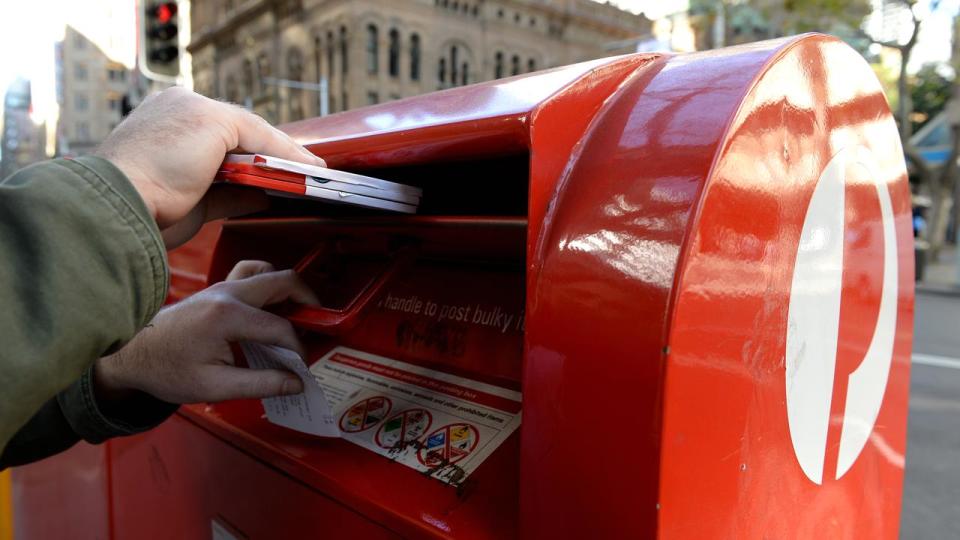Regions to suffer most as snail mail gets even slower
Posties always ring twice but in most of Australia from next week the reassuring tinkle accompanying the delivery of letters will only be heard every second day.
The long-term shift to email has led to losses of nearly $200 million for Australia Post, ending the era of regular daily drops in the letterbox.
Letters from Monday will be delivered every second day instead of daily for 98 per cent of locations across the country, while Australia Post will have an extra day to deliver standard mail.

This means a letter posted within a state should be delivered in four days and no more than five and between states, deliveries should take between six and eight days.
"While the impact may not be so significant for those in the major cities, the service in smaller towns, and especially regional and remote areas could be significantly impacted," Charles Darwin University professor Steven Greenland said.
"The collective impact of the cuts will create even greater delays, and especially during the high demand periods like Christmas."
For regular Australians, this means they will need to need to send birthday presents and holiday cards much earlier and for businesses they may have to find alternative channels for important functions like bills and invoicing.
"The resulting further declining mail service will also have an impact on other business sectors, such as the already struggling print industry," Prof Greenland said.
Under the new agreement, the government-owned corporation will also be able to change how it manages priority mail, allowing it to deliver services "at a more commercial rate".

After trials were set up last year, capital city households might already be familiar with the letter delivery extension.
But Communications Minister Michelle Rowland and Finance Minister Katy Gallagher reassured Australians the minimum number of post offices across the nation would not change.
And posties will continue to deliver daily, although their deliveries will favour parcels.
"These changes reflect the way Australians now interact with Australia Post and will help improve the company's financial sustainability," Ms Rowland said.
According to Australia Post, four in five households bought something online in 2023 and 9.5 million received a parcel.
But letter volumes have declined by two-thirds since peaking in 2008.
Earlier in April, the price of a stamp for a standard letter rose to $1.50, from $1.20.
The average Australian sends about 15 small letters a year and receives two a week , although that is expected fall to one a week in the next five years.

In March, Australia Post reported a 2023 second half pre-tax profit of $33.6 million, up 42 per cent on the same period in 2022.
The rise was attributed to the delivery of almost 100 million parcels across Australia.
The letters business recorded a $182.1 million loss in the six months ended December, as letter volumes fell 11.9 per cent.
Australian Post said the new delivery model will be rolled out nationally by the end of 2025, with posties delivering priority mail, express letters and parcels every day, and standard letters and unaddressed mail every second day.
"The regulations governing Australia Post had previously required us to focus on everyday letter delivery, even when there were no letters to deliver," CEO Paul Graham said.
"This has been contributing to significant financial losses for Australia Post.
"This is an important first step for Australia Post to address those financial losses by focusing its services on the growing parcel delivery business."

 Yahoo Finance
Yahoo Finance 